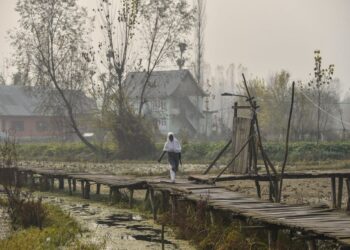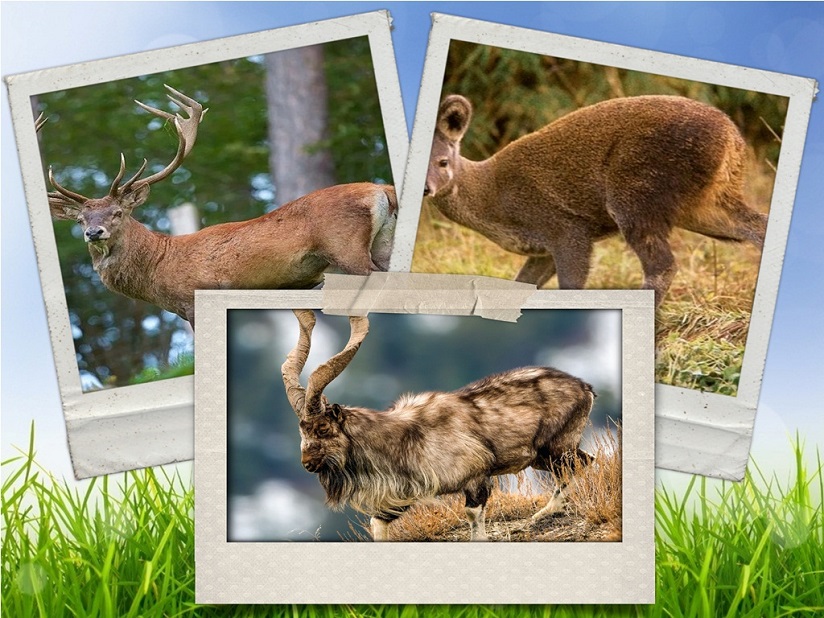
The scent glands of musk deer are considered more valuable than gold.
A recent rare picture of Kashmiri stag called Hangul might’ve left sundry awestruck, but the population of this critically-endangered species is decreasing at an alarming rate in the valley.
According to the findings of Wildlife Trust India, Hanguls, markhors and the Himalayan musk deer are among the most targeted species in Jammu and Kashmir.
As the only Asiatic survivor of the European red deer family, Hangul has been already declared as critically-endangered species in Kashmir.

Hangul was distributed in a radius of 40 km spreading from Karen in Kishenganga to Dorus in Lolab valley, Erin catchments in Bandipora to Chamba district of Himachal Pradesh, as per Kashmir’s shikar map prepared by Maharaja Hari Singh.
With continuous encroachment of land, this wildlife species loss their habitat and got confined to Dachigam National Park and adjoining protected areas, notes a research paper by Riyaz A Bhat.
The latest population monitoring survey of Hangul conducted by the Wildlife Department revealed that the number of Hangul in Dachigam and nearby areas is 261. It also mentions a sharp decline in the fawn-female and male-female ratio of Hangul.
Musk Deer
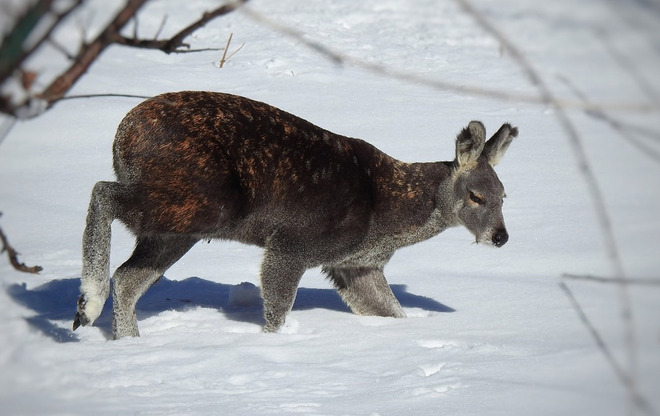
Native to Afghanistan, India, Pakistan and Nepal, musk deer was supposed to be extinct in 1948 until they were sighted in 2009.
The musk deer popularly known as Kasturi in the Himalayan regions are categorized as endangered species.
According to a research, seven species of musk deer are endemic to the mountains of Asia, and six of these are listed by International Union for Conservation of Nature as endangered.
“Most of the current habitats of Kashmiri musk deer will disappear in the 2050s or the 2070s except in Uttarakhand and west Nepal and their adjacent areas in Tibet,” the research said.
Poaching and habitat destruction, experts believe, are the two major activities that are responsible for the decline in their population.
The male musk deer are mainly poached because of their scent glands—considered more valuable than gold—used to produce perfumes and traditional medicine.
Markhors
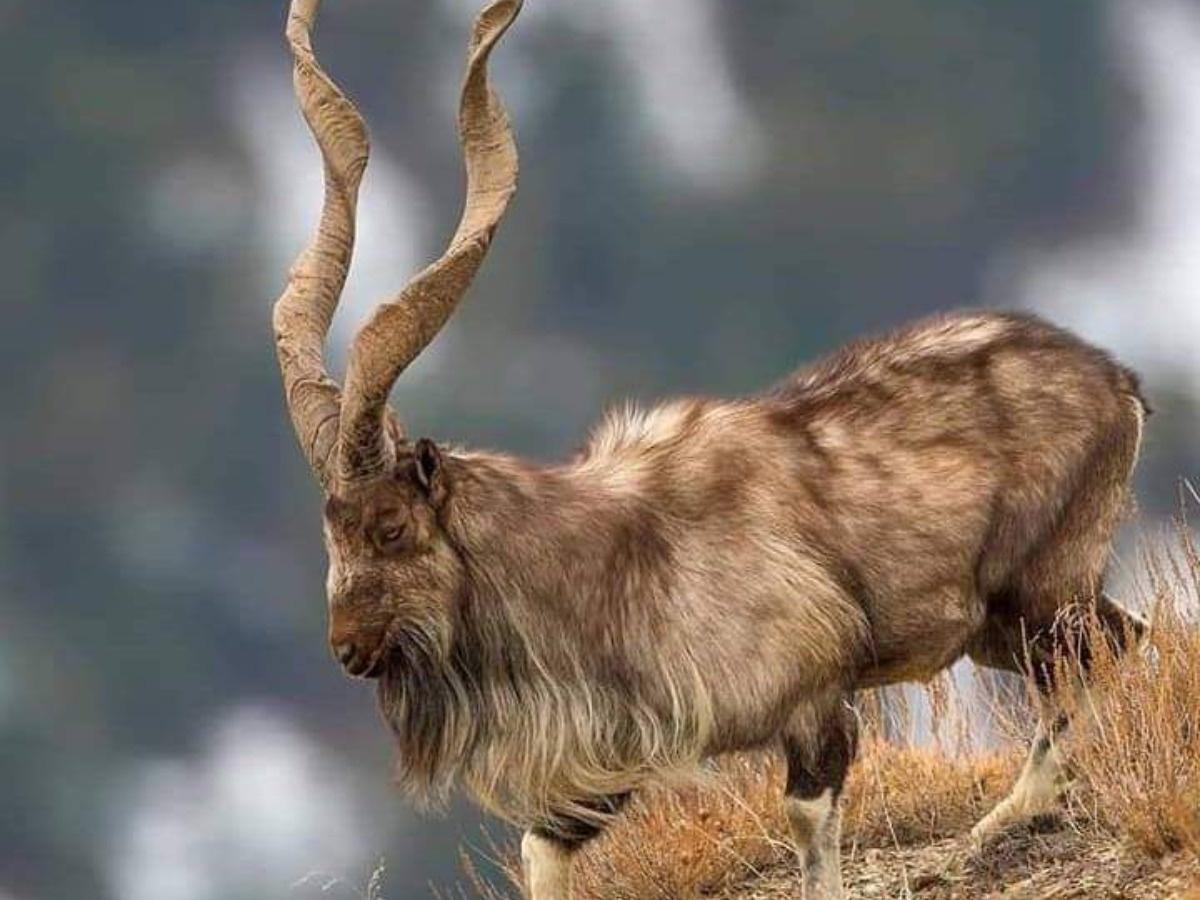
Markhor is the world’s largest species of wild goat having a limited geographical distribution in India, Pakistan, Uzbekistan, Turkmenistan, and Tajikistan. In India, the wild goat species is only found in Jammu & Kashmir.
According to a survey conducted by Wildlife Trust India in 2004-05, 35 markhor groups comprising of 155 individuals were sighted in Hirpura and Kazinag.
The survey mentions that poaching has been the main threat to markhors in J&K due to which the wild goats were reduced to near extermination.
Most of the areas where markhors were found were inaccessible during winters due to heavy snowfall which helped the locals to kill it for meat, mentions the survey, adding, “Markhor meat is locally regarded as the tastiest wild meat.”
According to the survey, shelling along the Line of Control (LoC) for many years has also affected the population of markhors.
Another similar report about the status of markhors in J&K, states that intensive grazing by the livestock of Bakkarwals has made the areas inaccessible to markhors which has led to the shrinking of the available habitat space for the wild goat.
Snow Leopards
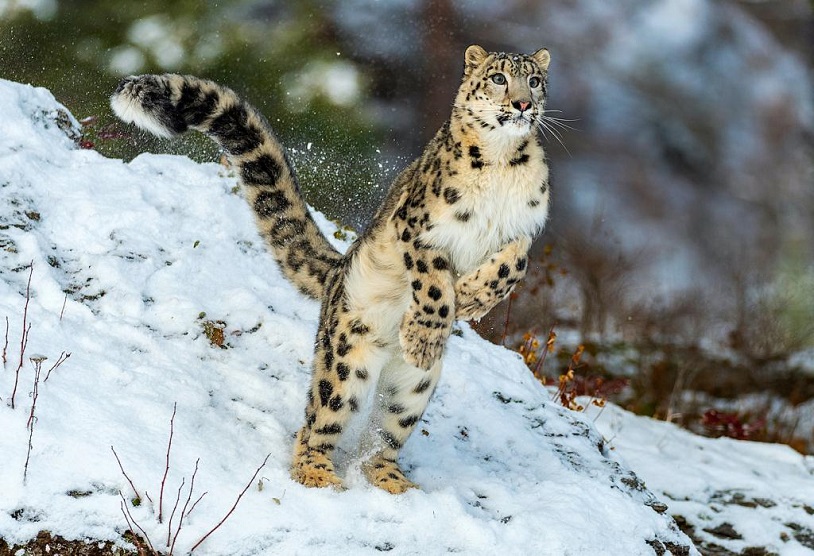
The species are found in the higher Himalayan and trans-Himalayan landscape at an altitude between 3,000 and 5,400 meters. Within India, they’re found in J&K, Himachal Pradesh, Uttarakhand, Sikkim, and Arunachal Pradesh.
According to a research by Supriya Bhatt, India’s leopard population has declined by 75-90% between 120 and 200 years owing to threats such as the depletion of prey population, destruction of habitat, human-leopard conflict, and poaching.
“Widespread conversion of the biodiversity-rich habitats into land for cultivation and human habitation has resulted in extensive habitat loss for wildlife including leopard,” mentions the study by Athar Noor on the density of leopard in the forest of Dachigam National Park and north-western Himalaya.“The low densities of prey represent an alarming status of the species.”
Another cause for the decline of the population of snow leopard is human-wildlife conflict. According to Census 2011, Jammu & Kashmir has a population of 1.25 crores as compared to a population of 1.01 crore in 2001, leading to an increase in land demand, food, raw materials, and many other resources that are procured at the cost of nature.
Follow this link to join our WhatsApp group: Join Now
Be Part of Quality Journalism |
Quality journalism takes a lot of time, money and hard work to produce and despite all the hardships we still do it. Our reporters and editors are working overtime in Kashmir and beyond to cover what you care about, break big stories, and expose injustices that can change lives. Today more people are reading Kashmir Observer than ever, but only a handful are paying while advertising revenues are falling fast. |
| ACT NOW |
| MONTHLY | Rs 100 | |
| YEARLY | Rs 1000 | |
| LIFETIME | Rs 10000 | |







